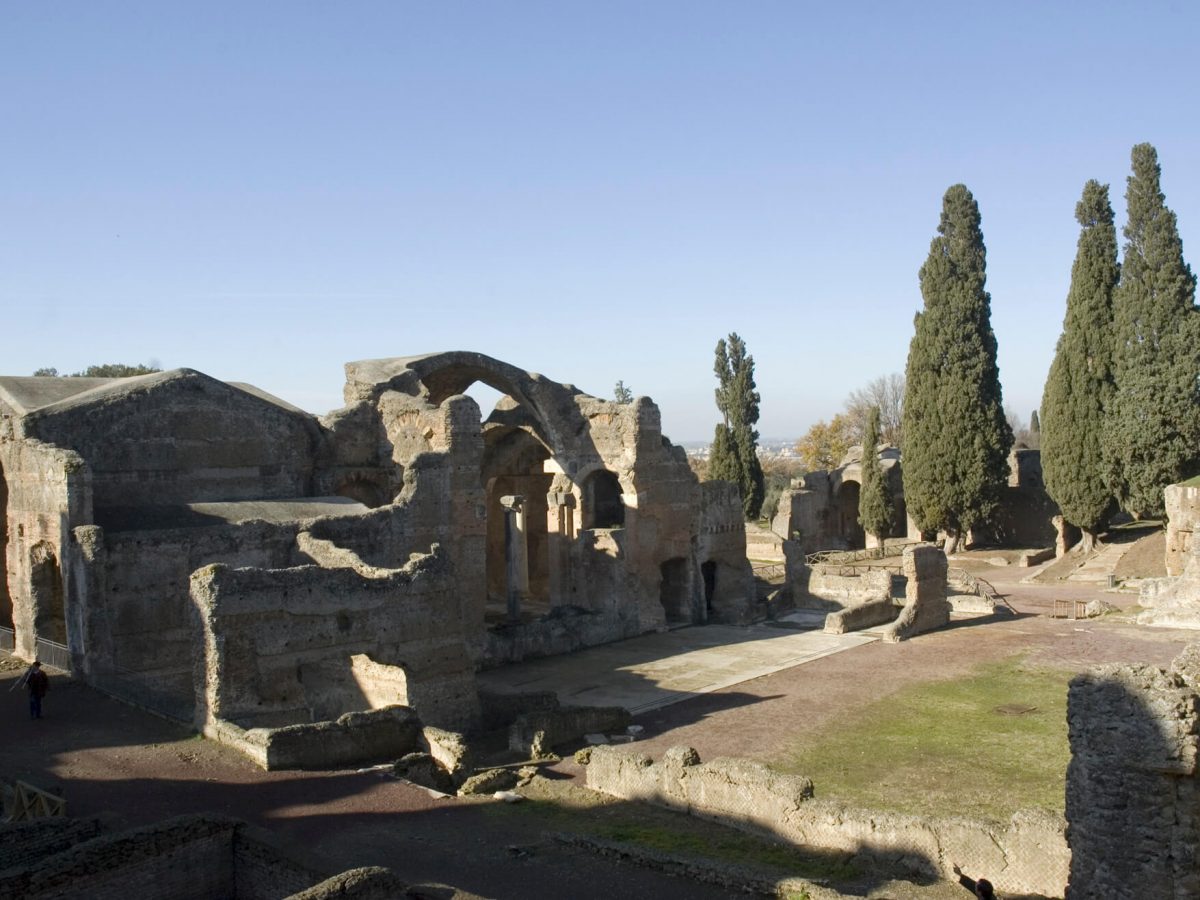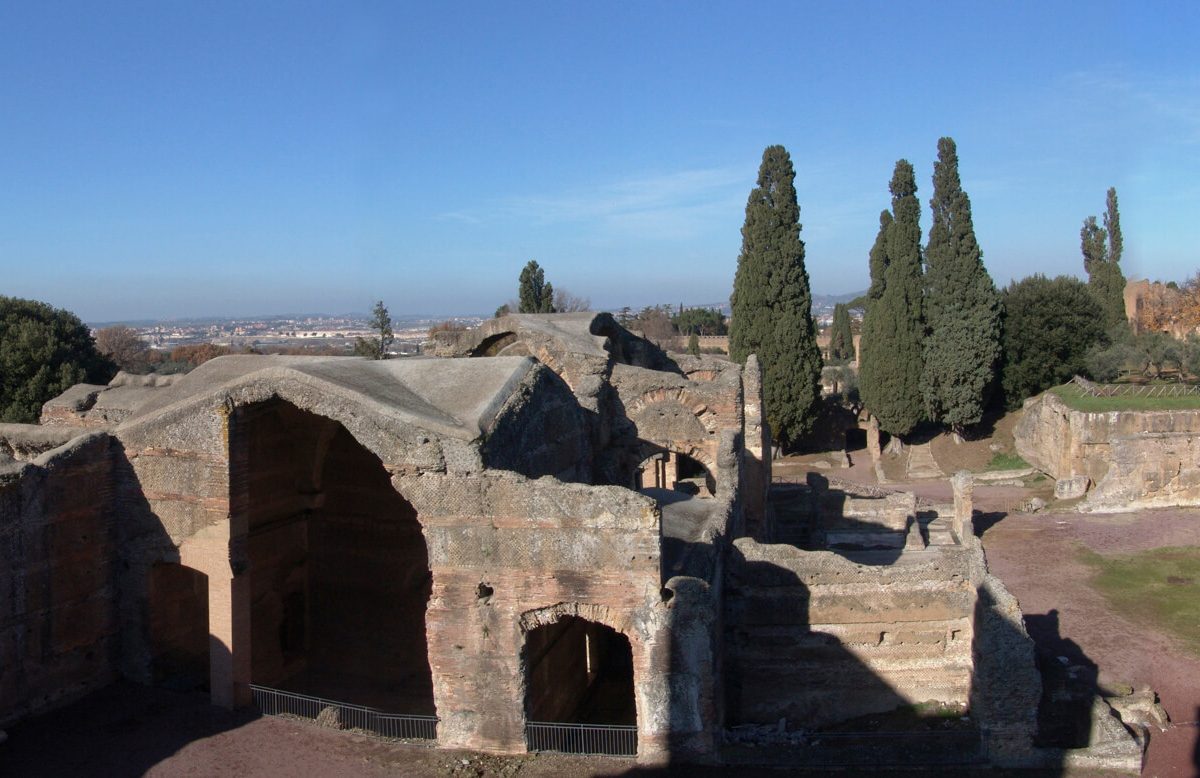Villa Adriana is an exceptional architectural legacy of the great Roman Emperor Hadrian. Built as a retreat from Rome between 117 and 138 AD, the villa was designed as an ideal city and incorporates the architectural traditions of Ancient Greece, Rome and Egypt. The remains of some 30 buildings extend over 120 hectares of the Tiburtine Hills, in Tivoli in the Lazio Region.
While the structures appear to be arranged with no particular plan, the site comprises a complex and well planned arrangement Together with a large number of residential and recreative buildings,,extensive gardens and reflective pools, the site creates a serene and contemplative oasis.
There are some thirty extant buildings within the site that can be broadly divided into four groups.
A first group of buildings on the site includes the so called ‘Greek Theatre’ and ‘Temple of Cnidian Aphrodite’.
At the core of the Villa, is a second group of structures including buildings specifically for the emperor and his court, and includes the so called ‘Maritime Theatre’, the ‘Imperial Palace’, ‘Winter Palace’, Latin and Greek ‘Libraries’ and the ‘Golden Square’. This group of structures is organized around four separate peristyles, The ‘Golden Square’ is one of the most impressive buildings in the complex, comprising a vast peristyle surrounded by a two-aisled portico with alternate columns of cipollino marble and Egyptian granite. The ‘palace’ consists of a complex of rooms around a courtyard. The circular structure of the ‘Maritime Theatre’ comprises an Ionic marble peristyle that surrounds an artificial circular island with a miniature villa. The ‘Libraries’ are reached from there by two passages, and a nymphaeum stands on the northern side.
A third group of buildings comprises the baths, including Small Thermae, Large Thermae and the Thermae with Heliocaminus.
The final group of structures includes the ‘Lily Pond’, ‘Roccabruna Tower’ and ‘Academy’. In addition to these structures, there is a complex of underground elements, including cryptoportici and underground galleries, used for internal communications and storage. There are also a number of large gardens, including the ‘Pecile’, and monumental nymphaea, as that with the ‘Temple of Cnidian Aphrodite’ or that in the ‘Court of the Libraries’ and, of course, dwellings for servants, as the ‘Cento Camerelle’.
This extraordinary complex of buildings and structures is symbolic of a power that was gradually becoming absolute. Villa Adriana, reminiscent of famous places and buildings throughout the empire, reproduced elements of the material cultures of Egypt, Greece and Rome in the form of an “ideal city.”
After suffering damage and neglect for many centuries after Hadrian’s death in 138AD, the site was eventually rediscovered in 1461. The serenity of the site inspired a renewed interest in classical architecture. Studies of Villa Adriana influenced architects of later centuries, notably the Renaissance but especially baroque architecture. Its remarkable achievement in design continued to exert significant influence on notable architects and designers of the modern era.





